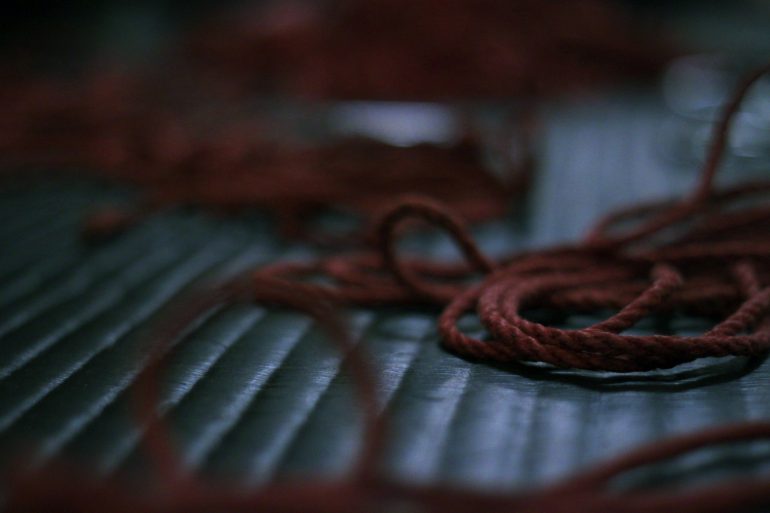Xiandan Rigging
All Tied Up
Rope Work
Most rope structures used in the present allow for some artistic expression save for the Vethium style. Everything from size, color, composition, smell, embellishments, and treatments all offer personalization to the structures a rigger can make.
Substance
The importance of the ropes composition cannot be overstated. Comfort is directly determined by how course or smooth the fibers are. Composition and maintenance are arguably more important than the methods of binding.
There are generally three role compositions that qualify for the intended use of rigging.
- Gotl: Gotl is a plant fiber that is remarkably strong but retains a soft and smooth surface. It is similar to rope made in Ozlith which was made of a silk like fiber. this is considered the highest quality rope for rigging but is temperamental and requires consistent care or it will degrade.
- Velko: Velko is generally rough and abrasive, but can definitely work with conditioning and proper treatment. The rope is of poor quality and has a tendency to slip and collapse with tension. This is usually the fault of poor training and it increases the risk of injury to the subject. While not high in quality, it can certainly seem like it. It's usually regarded as an "experts rope" due to the skill needed to treat it, condition it, and rig it properly.
- Saraluce: Saraluce is incredibly slick and one if the softest substances known. It is a fully synthetic rope created by Arcanists and Bards. It is hard to make and can be costly to purchase, but is considered the best form of rope to have as It is ideal to create Twixt Twine. When used to make Twixt Twine, the rope is as soft and malleable as the rigger desires, even to the point of flattening itself, looking much more like a long strap or a scarf than a length of rope.
The Ties That Bind
In Xiander, a marriage rite emerged among the warrior class. If two warriors married, they would bind each other and unite the rigging, creating a single, highly complex, and often beautiful suspension structure of rope. The rope itself is often the softest rope available, made from plant fibers with a similar feel to silk. Both parties experience the meditative states often felt for both the rigger and the bound. They often linger in the air for some time before the bindings are removed. From that point onward, they are never to fight alone, always side by side in battle as they are in everyday life.
The written content of Expedition Demeter is licensed under a Creative Commons Attribution-NonCommercial-NoDerivatives 4.0 International License. All content, unless stated otherwise, copyright ©2017-2019 Richard Dylon Elder.
All Rights Reserved. All images are or are being credited, very few are actually mine.
Developed, Written, and Edited by: Richard Dylon Elder (Dylonishere123)
All Rights Reserved. All images are or are being credited, very few are actually mine.
Developed, Written, and Edited by: Richard Dylon Elder (Dylonishere123)




It's wonderful to see a mature and well thought out take on the affair, as well as making it less for a sake of fun and more ritualistic. I'm a bit odd, but I like seeing minutia turned into a traditional and revered affair, like how to solemnly pour water from a cistern to symbolize the purity of man or whatever the ritual requires. The amount of detail is inspiring and overall I would say this is another of your patented, incredible articles.
Thank you very much! Its something ive been wanting to do for a while. some most certainly do this for fun in xiander but its sacred in many ways. not casual so yes I understand what you mean. This is gonna be my last article till after summer camp in Expedition Demeter. The web is a world i need to develop badly. lol im glad its getting the attention it is. thanks again my friend!